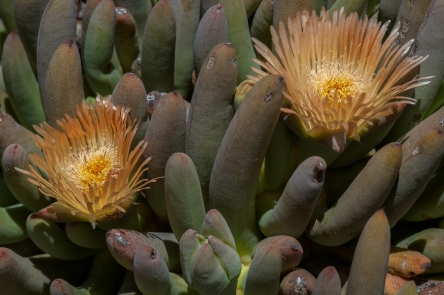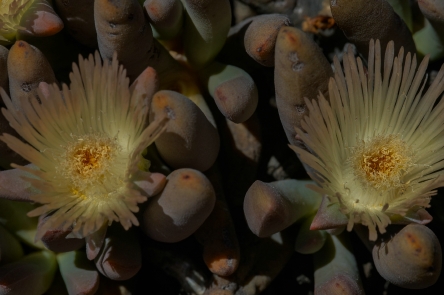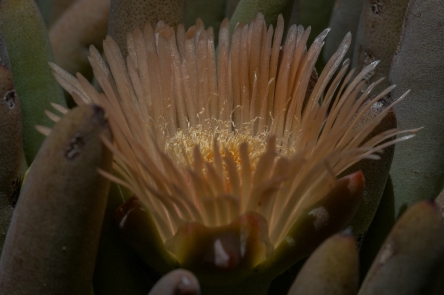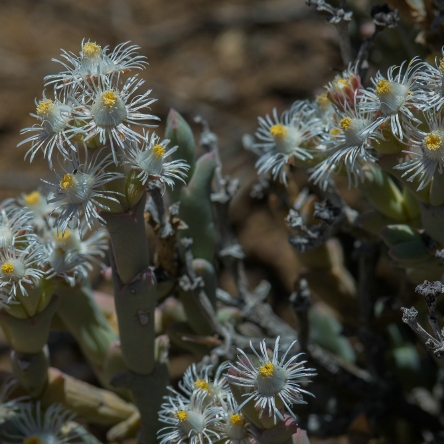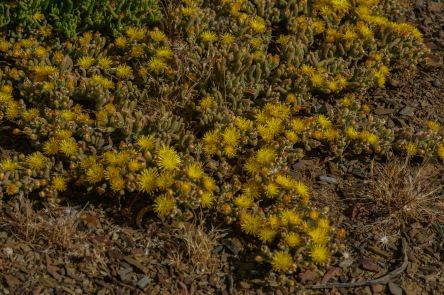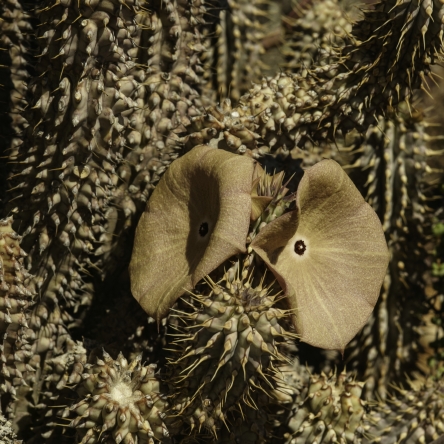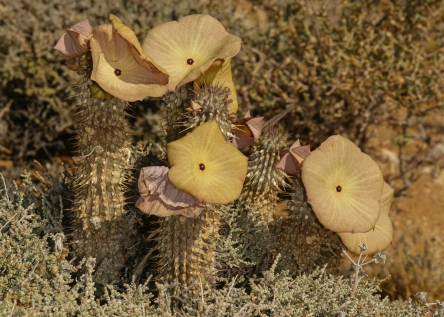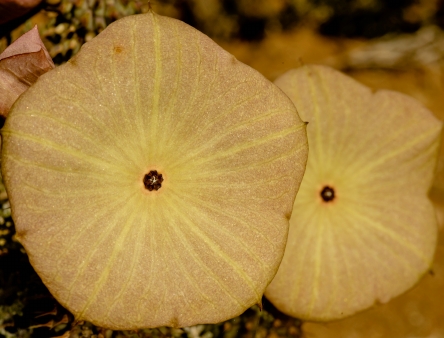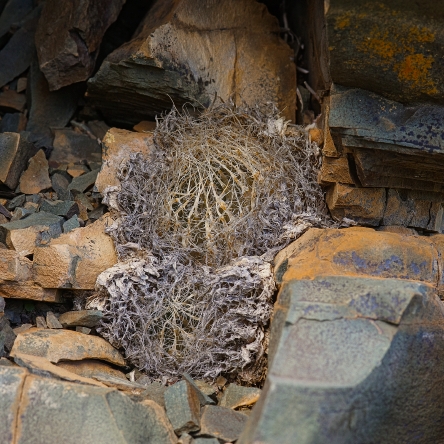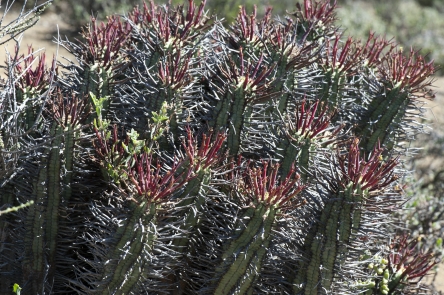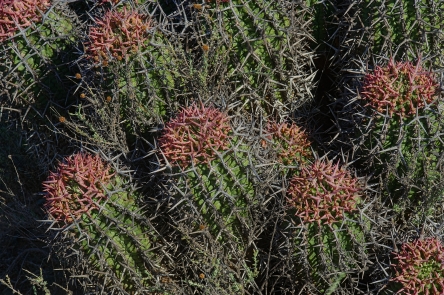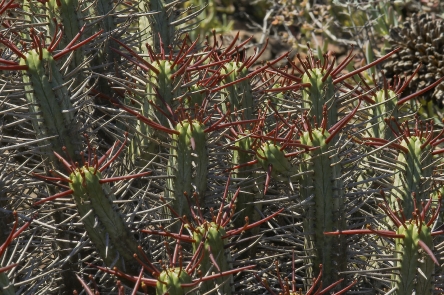Pictures taken 13 October 2007 north of Matjiesfontein.
Tag: Great Karoo
Ruschia crassa
Mesembryanthemum excavatum
Hoodia gordonii
Tylecodon paniculatus X wallichii
It is not often that one finds natural hybrids and it is even more rare to see them growing cheek by jowl with both parents.
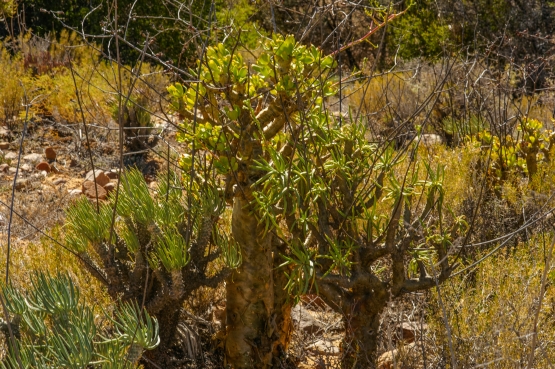
The three plants in the centre of the picture are- from left to right- T. wallichii, T. paniculatus and their hybrid offspring.
Both parents are widely distributed in the western part of South Africa. T. paniculatus is reported to flower between November and January, and T. wallichii from December through February. This overlap in distribution as well as in flowering period would explain the opportunity for hybridising.
When you have a good look at the picture, you will see that both T. paniculatus and the hybrid are pushing out inflorescences. The plants were photographed on 11 September 2010 (at the eastern side of Skitterykloof), so apparently the flowering period of T. paniculatus is rather longer than indicated in the literature.
Haworthia decipiens var. decipiens
Today’s post is the first in what is intended to become a daily posting of one or more interesting and beautiful pictures (mainly) of succulent plants. The text will be kept to a minimum, so as not to distract from the images. These post will be an addition to, not a replacement for, the usual ones.
You may also notice that I have added a photo gallery to the blog. Enjoy!
We kick off with two pictures that are identical, except for the fact that one was taken with a diffusor. That one seemingly little difference produces quite a different result. One can not really say that one picture is better than the other, but they give different information and also evoke a different feeling. When the light is harsh like in this case, it is worth taking a couple of pictures with and without a diffusor or reflector.
Two interesting Euphorbias from the southern Great Karoo. Part 2: The start of a hybrid swarm?
Because this area harbours a variety of interesting succulents, we had high expectations of what we might come across. Nevertheless, the rest of the trip was rather boring. That is, till the moment George pointed out a big clump of what we both thought was Euphorbia stellispina, in a field next to the road. Finding that species in itself, would have been nice enough, but when we walked up to the plant, we discovered that it was much more special: about all the plant’s features were perfectly in between those of E. stellispina and E. heptagona. The result was spectacular.
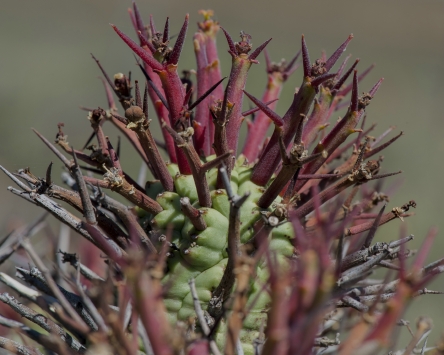
Two pictures of the purported hybrid
When we searched the immediate surroundings, we found plants of both these species, which strengthened the idea that our plant was a hybrid between the two.
To make the find even more exciting, after some looking around we came across another hybrid between the same parents.
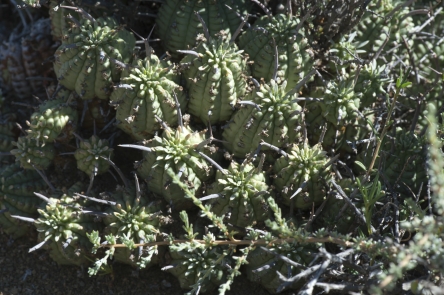
More interesting than beautiful
Here the results of the mix are totally different and far less appealing. On the other hand it is exciting to witness what may be the beginning of a hybrid swarm and it would be interesting to follow the population’s behaviour over some time.

